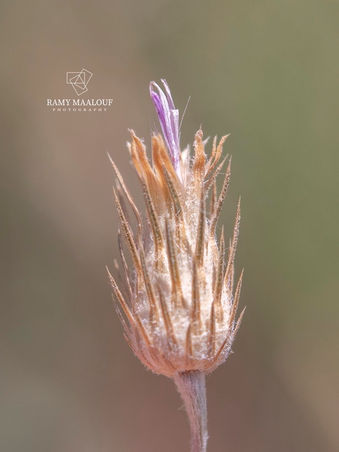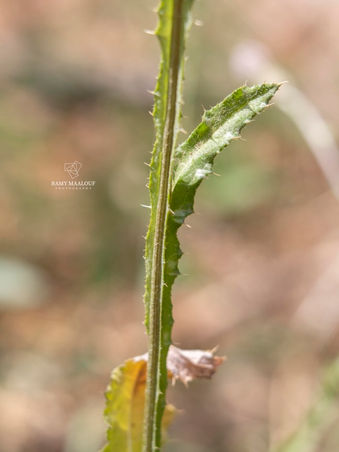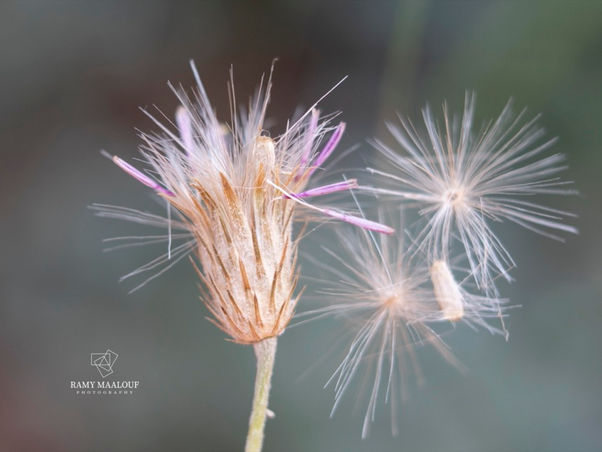Family |
Asteraceae
Carduus pycnocephalus
L.
Carduus pycnocephalus L.
(Nouvelle Flore du Liban et de la Syrie, vol. 3, p. 452; 1983)
Life-form & habit: Annual species with stems bearing narrow, spinulose wings.
Leaves: Pinnatifid with ovate, toothed, spine-tipped lobes; upper surface green and nearly glabrous, lower surface often canescent.
Inflorescence & flowers: Heads grouped in clusters of 2–5, sessile or on short peduncles. Involucre narrow, ~1 cm in diameter; bracts progressively narrowed, acuminate, and shorter than the innermost bracts.
Fruit: Not detailed in the text.
Phenology: Flowers in spring.
Habitat & elevation: Fields, roadsides, and rocky terrain.
Lebanese distribution: Mentioned in identification keys and plates, but no specific localities listed.
Native range: Afghanistan, Albania, Algeria, Austria, Baleares, Belarus, Belgium, Bulgaria, Canary Is., Corse, Cyprus, Denmark, East Aegean Is., East European Russia, Egypt, France, Greece, Gulf States, Iran, Iraq, Italy, Kazakhstan, Kirgizstan, Kriti, Krym, Kuwait, Lebanon-Syria, Libya, Morocco, North Caucasus, NW. Balkan Pen., Oman, Pakistan, Palestine, Portugal, Sardegna, Saudi Arabia, Sicilia, Sinai, South European Russia, Spain, Sweden, Tadzhikistan, Transcaucasus, Tunisia, Turkmenistan, Türkey, Türkey-in-Europe, Ukraine, Uzbekistan, West Himalaya. (KEW)
Introduced into: Alabama, Arkansas, California, Chatham Is., Ethiopia, Germany, Great Britain, Hawaii, Idaho, Madeira, Mexico Northwest, Mississippi, New South Wales, New York, Oregon, Pennsylvania, Queensland, South Australia, South Carolina, Sri Lanka, Tasmania, Texas, Uruguay, Victoria, Western Australia. (KEW)





